This article has been reviewed according to Science X's editorial process and policies. Editors have highlighted the following attributes while ensuring the content's credibility:
fact-checked
proofread
Research tracking map shows wildlife polluted by flame retardants on massive scale
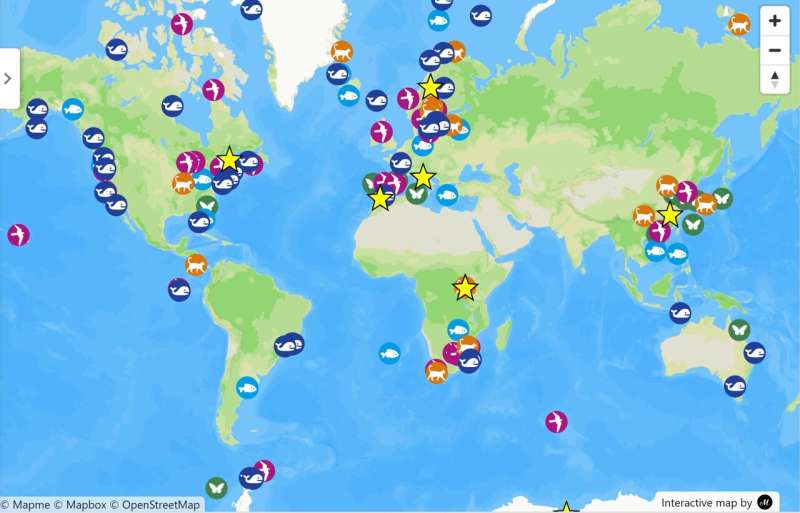
More than 150 species of wild animals across every continent are contaminated with flame retardant chemicals, according to a new map tracking peer-reviewed research worldwide.
Polluted wildlife include killer whales, red pandas, chimpanzees and other endangered species. Added to furniture, electronics, vehicles, and other everyday products to meet flammability standards, the chemicals often do not work as intended. They also migrate out of products and into wildlife—and people.
"Flame retardants don't actually make TV enclosures and car interiors more fire-safe, but they can harm people and animals," said project lead Lydia Jahl, a scientist at the Green Science Policy Institute. "Though these product flammability standards may seem protective at first glance, many cause widespread and lasting harm for no real benefit."
Flame retardants found in wildlife include both older phased-out chemicals like polychlorinated biphenyls (PCBs) and polybrominated diphenyl ethers (PBDEs) as well as newer replacements chemicals like chlorinated paraffins and organophosphate flame retardants. Though known to cause liver, thyroid, and kidney cancers in laboratory animals, chlorinated paraffins are still commonly used in consumer products, with more than one million tons produced annually. Similarly, use of organophosphate flame retardants is proliferating, though even low levels may harm IQ, attention, and memory in children.
-
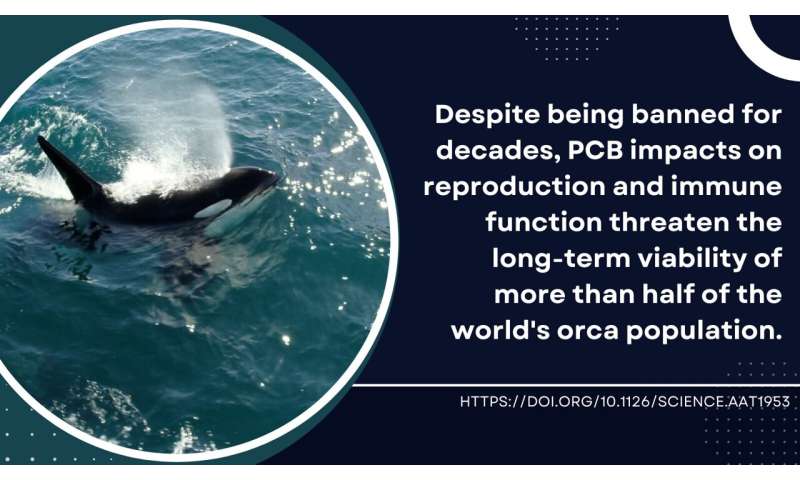
PCBs threaten the viability of more than half the world's killer whale population. Credit: Green Science Policy Institute -
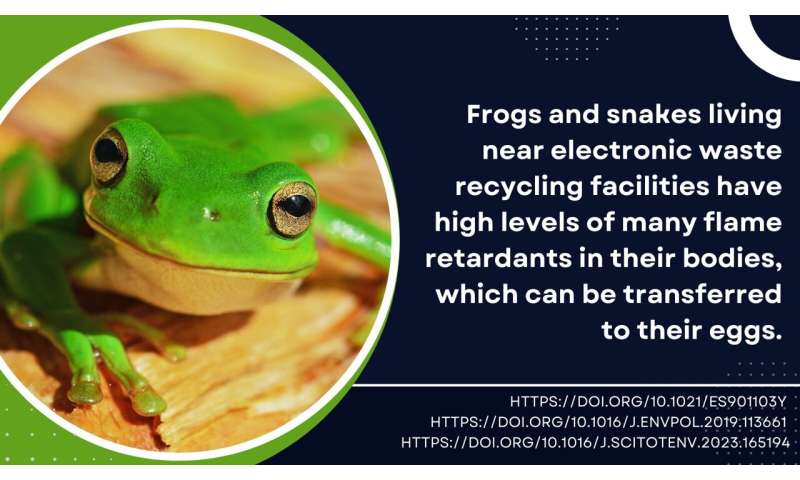
Frogs and snakes living near e-waste sites are heavily contaminated with flame retardants. Credit: Green Science Policy Institute
Flame retardants accumulate up the marine and terrestrial food chains with the highest levels in marine mammals and birds of prey. For example, PCB levels in killer whales have been linked to lower calf survival rates and weaker immune systems. Orca pods in Greenland, the Strait of Gibraltar, and Hawaii have been ravaged by accumulating flame retardants.
Indeed, scientists calculate that PCB contamination could wipe out half the world's killer whale populations over the next century. That's despite the fact that PCBs have been banned since the 1970s.
"Killer whales shouldn't have to swim in a sea of flame retardants. The science is clear that these chemicals harm their development—as well as that of our children," said Arlene Blum, executive director of the Green Science Policy Institute. "We need to update ineffective flammability standards to stop these toxics from entering the environment, wild animals, and us."
Sentinels for the harms of increasing use of chlorinated paraffins in products include black-spotted frogs living near electronic-waste facilities in China. These chemicals are linked to shrinking livers in the frogs and they can also be transferred to their eggs.
-
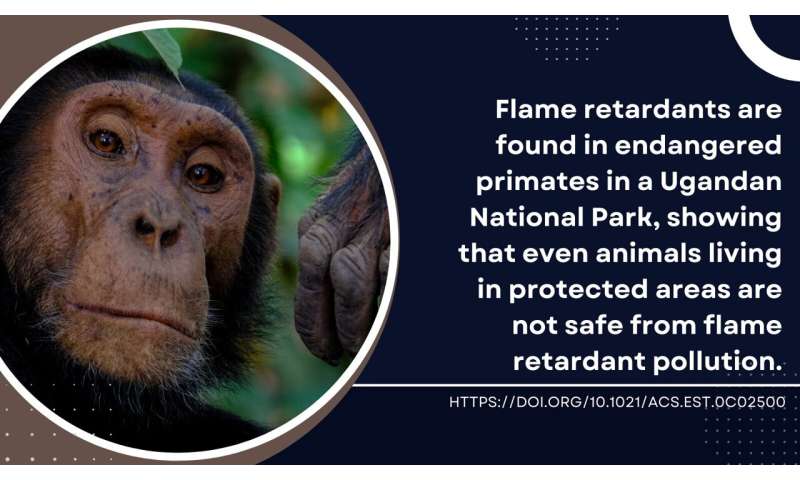
Flame retardants reach chimpanzees in Uganda. Credit: Green Science Policy Institute -
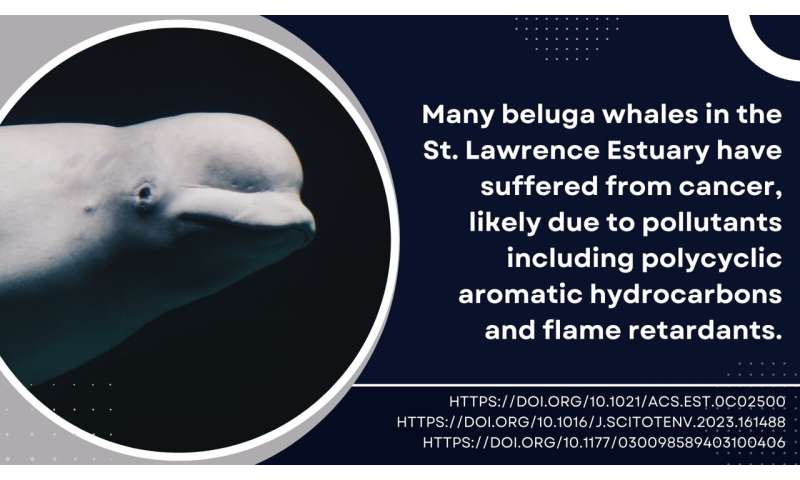
Flame retardants and other pollutants are linked to cancer in beluga whales. Credit: Green Science Policy Institute
Flame retardants are also found in species living in areas far from their production, use, and disposal, showing their potential for long-range transport. For example, high levels of flame retardants have been detected in chimpanzees in a protected Ugandan National Park.
"This map illustrates the global consequences of repeatedly replacing harmful flame retardants with others that turn out to be similarly harmful," Jahl said.
"Instead of this endless cycle of regrettable substitutions, we need to evaluate whether many of the flammability standards that drive the use of flame retardants are even helpful. Some standards—such as California's old furniture standard—have already been proven ineffective and revised. Many more wouldn't stand up to scrutiny either, and they are wreaking havoc on wildlife and people alike."
Provided by Green Science Policy Institute




















